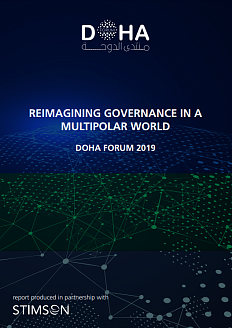The Roscongress Foundation and Expert Rating Agency are set to publish a report titled ‘Economic health of Russia’s regions: positive outlook.’ The report uses integral estimates to evaluate current and future economic development of Russian regions in 2019. The project is carried out as part of the cooperation between the Roscongress Foundation and Expert RA.
Economic health of Russian regions in 2019. Leading regions
According to Expert RA, the reasons for a better economic health in 2019 were lower inflation and interest rates, a moderate growth in local salaries, lower debt servicing costs, and a high activity in the construction sector.
The leading regions are those with rich amounts of natural resources, a developed manufacturing sector, and an «institutional rent» (their status as a capital). Currently, the economic health index is classified as «high» in eight regions.
Upward trend in low-performing regions
The low-performing regions are mostly characterized by small amounts or a lack of natural resources, undeveloped corporate sector, and a dependence of the local economy on government funding. Currently, the economic health is classified as «below average» or «low» in 35 regions.
Nevertheless, these regions can still demonstrate considerable improvement if given a slight impetus or due to the low base effect. Moreover, the growth will be much more noticeable here because of the low starting position. In the absence of either strong momentum or severe economic shocks, however, the growth in the majority of regions (59 regions) was moderately positive in 2019. The regions with the lowest economic health experience high unemployment, low purchasing power of the population, and high debt load. They won’t be able to accelerate without federal support. The support is likely to come through national projects, in particular through the implementation of the national goal of fighting poverty. This is why first results can be expected as soon as at the end of 2020.
Economic health of the population
Economic health of the population is improving due to low inflation and a moderate growth in salaries. People’s welfare is rising because of higher amounts of available cash which lets the people buy extra products and services besides providing for their basic needs. In low-performing regions, barriers to growth include high consumer price index, high unemployment, and low purchasing power of per capita income.
Conversely, the leading regions have high purchasing power of per capita income. This lets people in these regions buy about three consumer baskets of products and services at typical local prices. Most leading regions also have a low consumer price index and low inflation.
The low-performing regions are characterized by a low purchasing power of per capita income and low indicators of retail trade. Also, they see a decrease in the volume of fee-based services provided to the public. Other indicators demonstrate a variety of trends. Real wages decreased in 11 regions out of 85, retail trade turnover dropped in 9 regions, while the volume of fee-based services decreased in 44 regions.
Economic health of regional businesses
Concerning the economic health of regional businesses, the leading regions demonstrate intensive investment, high efficiency of local companies, and a relatively developed SME sector. The high-performing regions also show a high level of new housing supply, which indicates high effective demand (including residents of adjacent regions) and the availability of the required infrastructure (in construction, finance, and the power industry).
The experts note that an additional reason for the high relative amounts of investments, profits tax revenues, and SME taxes in some of the leading regions is their small population.
The regions with the lowest economic health of businesses are characterized by low investment intensity and low effectiveness of local businesses, which results in small relative amounts of profits tax and lump-sum taxes.
Economic health of regional consolidated budgets
Economic health of regional consolidated budgets has shown a positive trend for the second year in a row. The tax base is growing, despite the deceleration, while debt servicing costs are shrinking. Regions took advantage of the period of decreasing interest rates to further diversify their loan portfolio.
Regions will be able to maintain their economic health at the current level if interest rates are fixed through issuance of long-term bonds, the current growth rate of tax revenues stays unchanged, and money is spent in an efficient way to both meet social needs and finance national projects.
Current economic health of Russian regions in 2019
An integrated economic health index indicates a positive trend both across time (chiefly retrospectively) and space (interregionally). Despite the remaining regional differences in the economic development and living standards, the proportion of high-performing regions to low-performing regions has increased compared to the previous year.
Notably, the top ten regions have remained practically unchanged with minor adjustments only. It’s also worth mentioning that the upward trend in economic health indicators continues for the second year in a row. Importantly, the trend is observed in low-performing regions too. Compared to the previous year, another two groups of regions — those with a moderately high and a moderately low economic health — have formed.
Key conclusions from the report are available in the videо.






